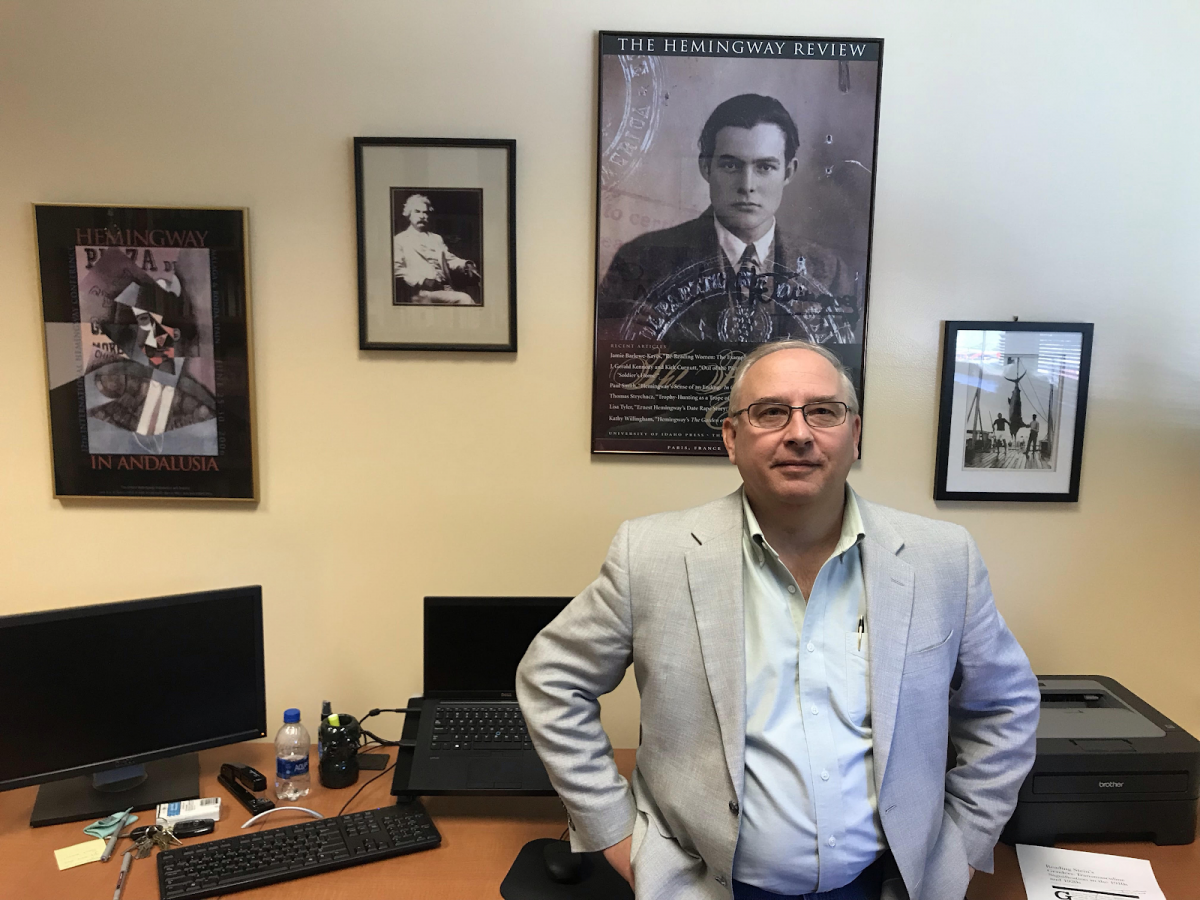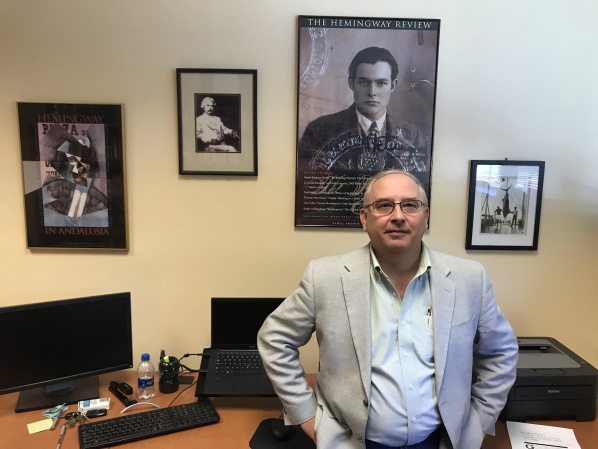Last week, I had the pleasure of interviewing Dr. Carl Eby on his Off Campus Scholarly Assignment (OCSA) research during the Fall 2018 semester, which focused on Ernest Hemingway's The Garden of Eden.
A significant portion of this research was conducted at the John F. Kennedy Library in Boston, where the novel's original manuscripts are housed. The impetus for Dr. Eby's research on this specific novel comes from an invitation to contribute to a book series, titled Reading Hemingway, in which leading Hemingway scholars produce close-readings of his works. Dr. Eby explained that this type of analysis is necessary with Hemingway's work in particular because the author wrote with extreme precision regarding every detail in each story. In light of this stylistic mode, seemingly mundane details about setting, food, drinks, restaurants, and any number of cultural details prove crucial in the interpretation of Hemingway's works. Dr. Eby assured me that these close-readings will analyze entire Hemingway books "line by line or at least page by page."
Dr. Eby's goal in working with The Garden of Eden manuscript is to not only to explain what's in the text, but also pinpoint exact moments in Hemingway's composition process. Hemingway wrote The Garden of Eden over the last 15 years of his life, and only forty percent of what he actually wrote appears in the edition of the novel posthumously published by Scribner's in 1986. For this reason, Dr. Eby needs to work with the entire manuscript, and he needs to be sensitive to events of the 1950s that indirectly filter their way into and influence the action of a story set largely in the 1920s.
While Dr. Eby's most recent visit to the Kennedy Library began as a continuation of research for his book, he discovered information for a new 40-page spin-off article, an earlier version of which he presented in 2018 at the Eighteenth International Hemingway Conference in Paris. The article is titled "In the Year of the Maji Maji: Settler Colonialism, the Nandi Resistance, and Race in The Garden of Eden" and focuses on key details of one of the "African stories" written by the novel's writer-protagonist, David Bourne.
After collecting key details of the African landscape described in the novel, Dr. Eby used Google Earth and virtual reality simulators to pinpoint the action of the story, including the massacre that serves as its culmination. Though the consensus in the field had long identified the massacre as a reference to the Maji Maji rebellion in German East Africa, Dr. Eby's research suggests that the reference may be more accurately attributed to the Nandi Resistance in British East Africa in 1905. Dr. Eby's article claims that the details he discovered demonstrate a new meaning in the text, one that calls attention to the founding injustice and violence of British Colonialism at a moment of special political significance, since Hemingway was writing the story during the Mau Mau Rebellion of the 1950s that would ultimately lead to Kenyan independence. Dr. Eby suggests that Hemingway's treatment of these events was structured by attitudes inherent in settler colonialism, but were ultimately even more strongly influenced by his own relationship with his father.
While Dr. Eby continues to work through The Garden of Eden manuscripts, he presumes that he'll continue to find little side projects along the way due to Hemingway's extremely dense knowledge about the world around him. One side project Dr. Eby has started is creating new assignments for classrooms that will help students focus on close-reading, detail orientation, and historical research. Reflecting on the benefits of his research, Dr. Eby states that it leads him to
"[...] something new every day. It's changed the way I read and research, and I hope to bring what I've learned to my classes."

Written and photographed by Nathan Plybon.

